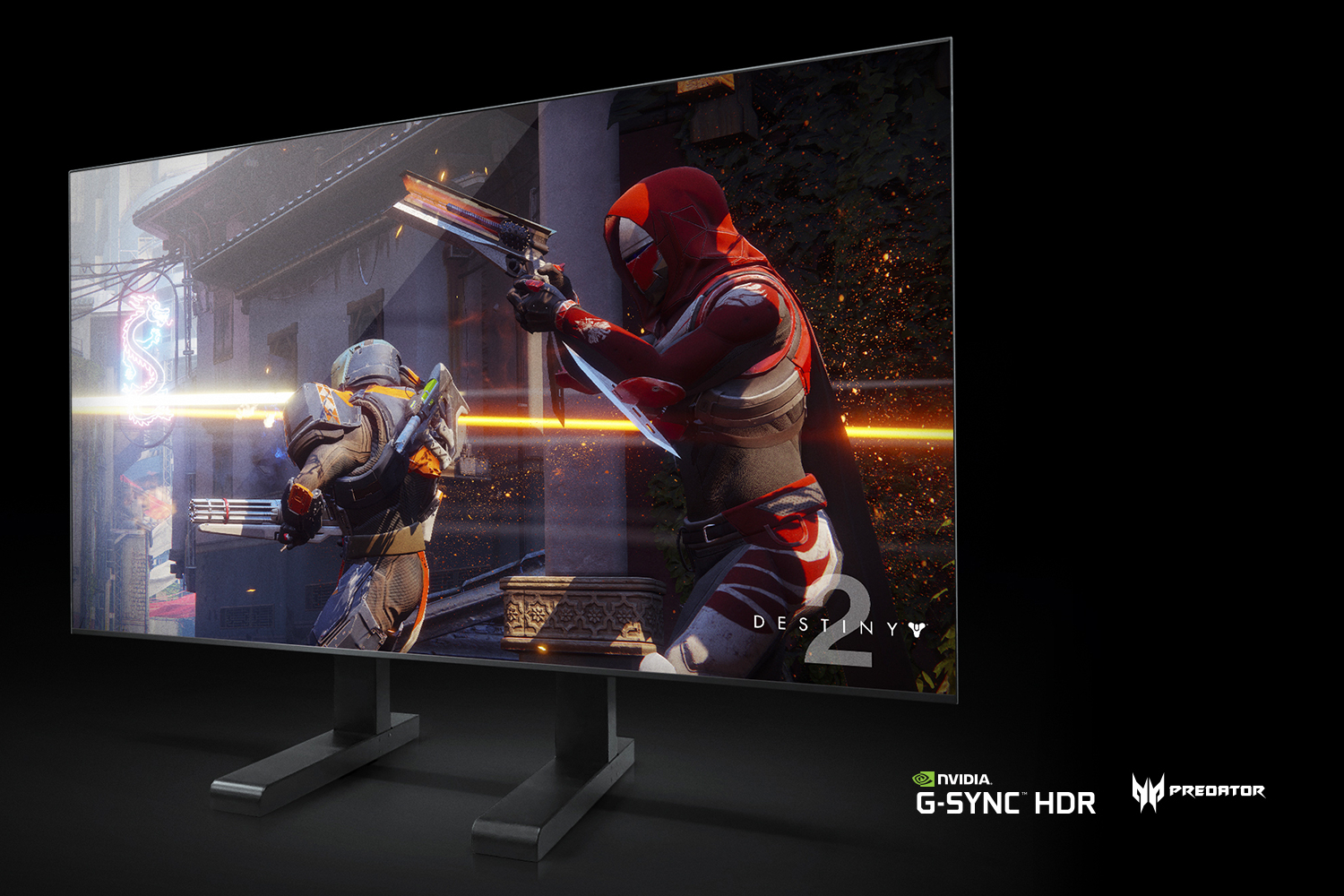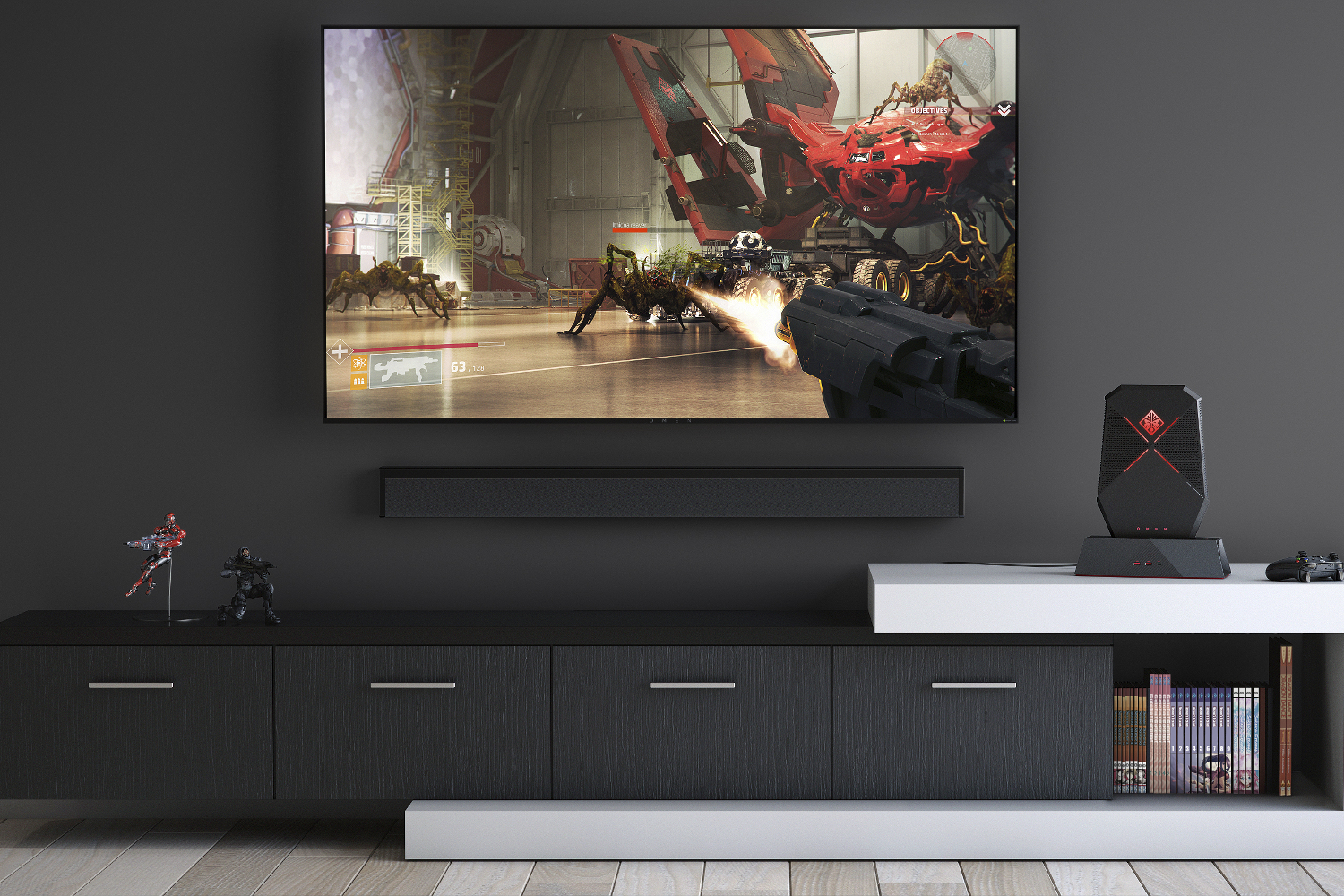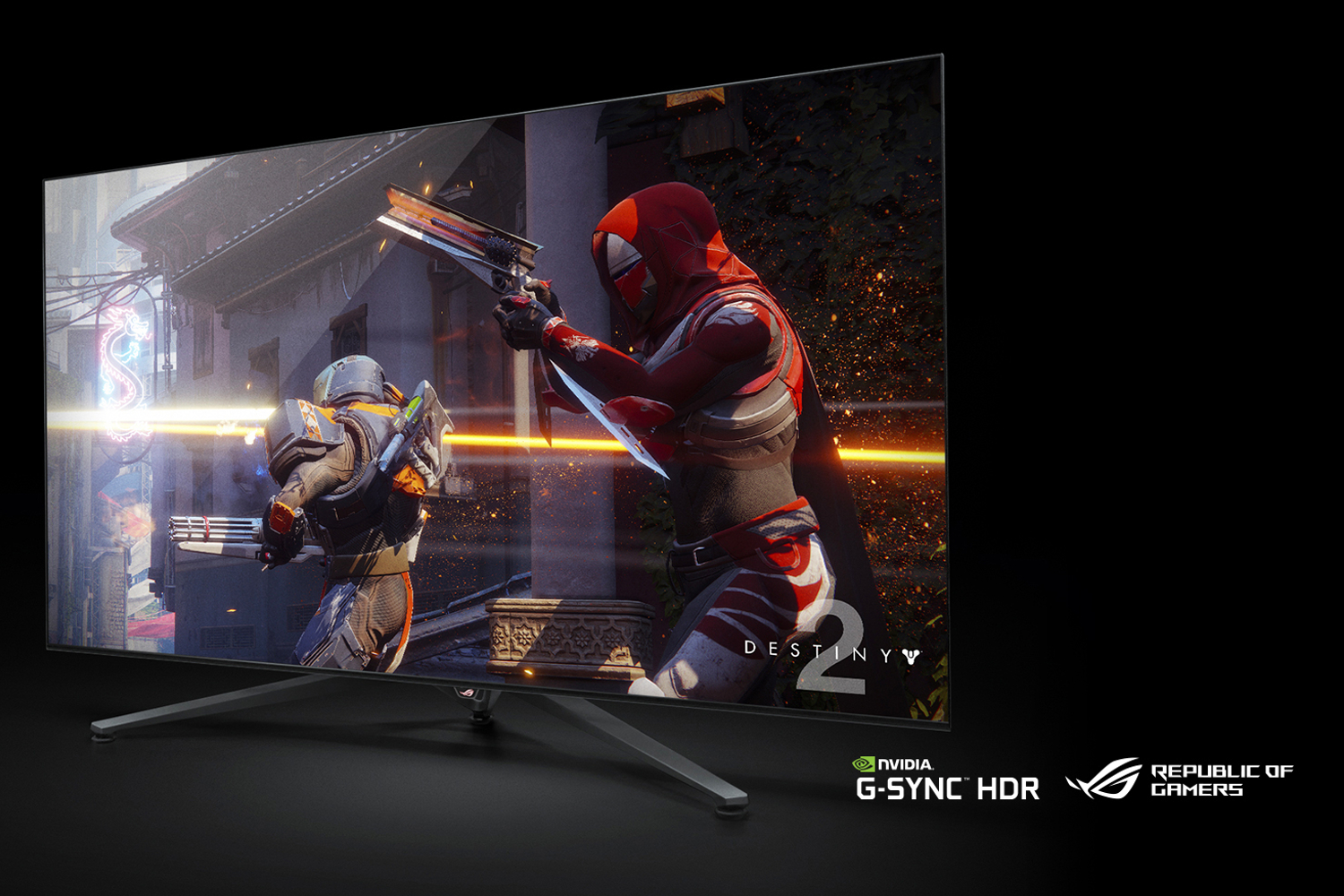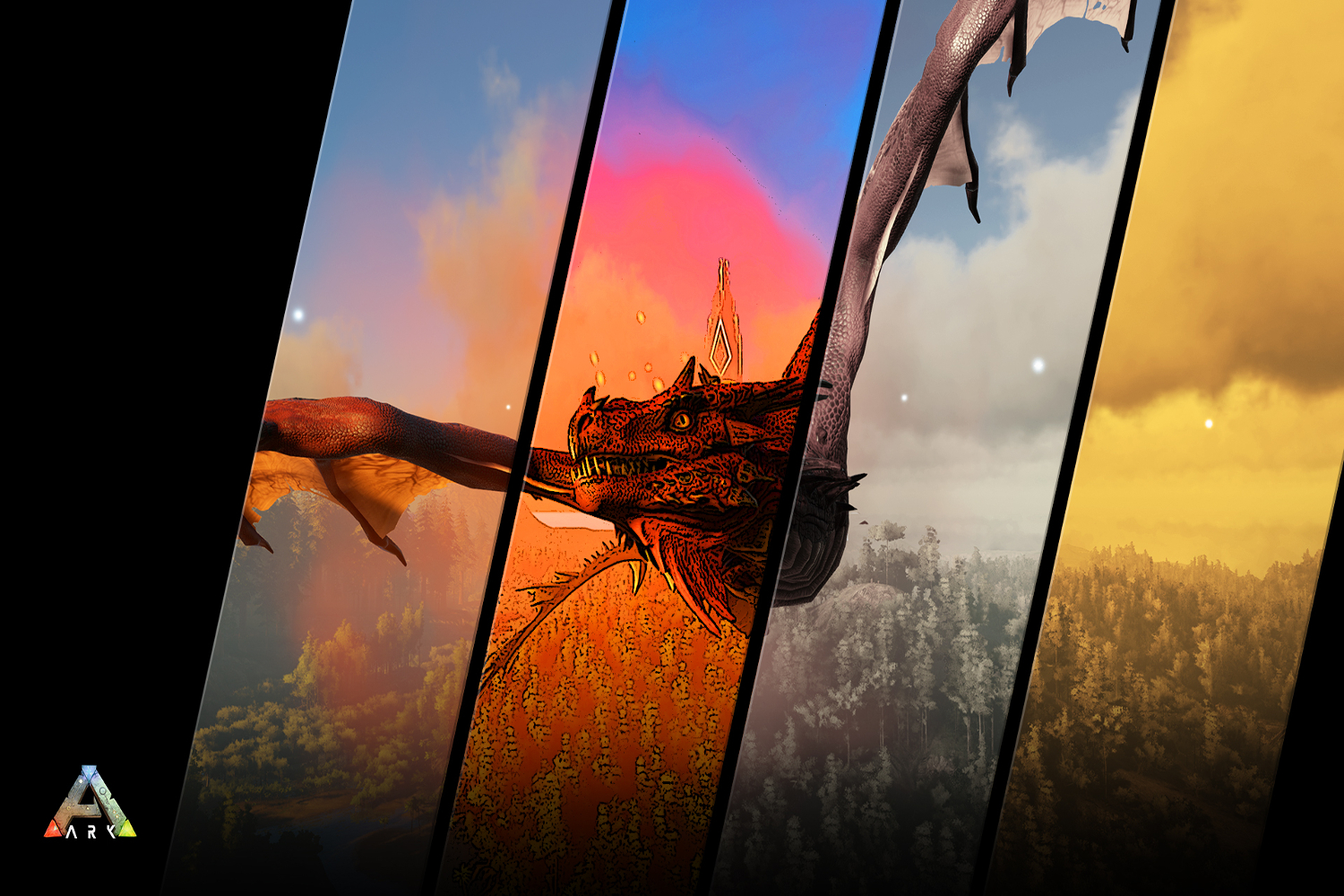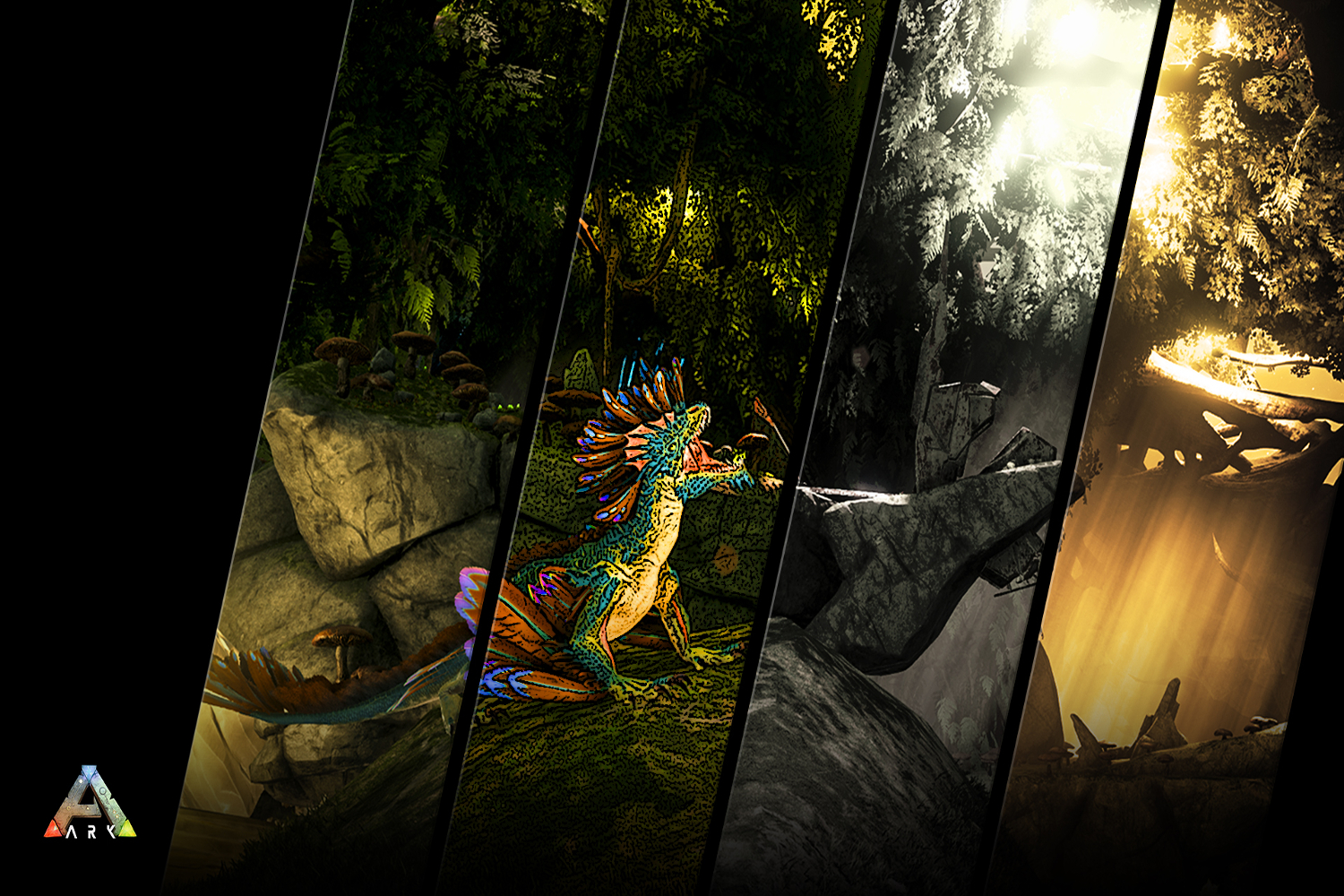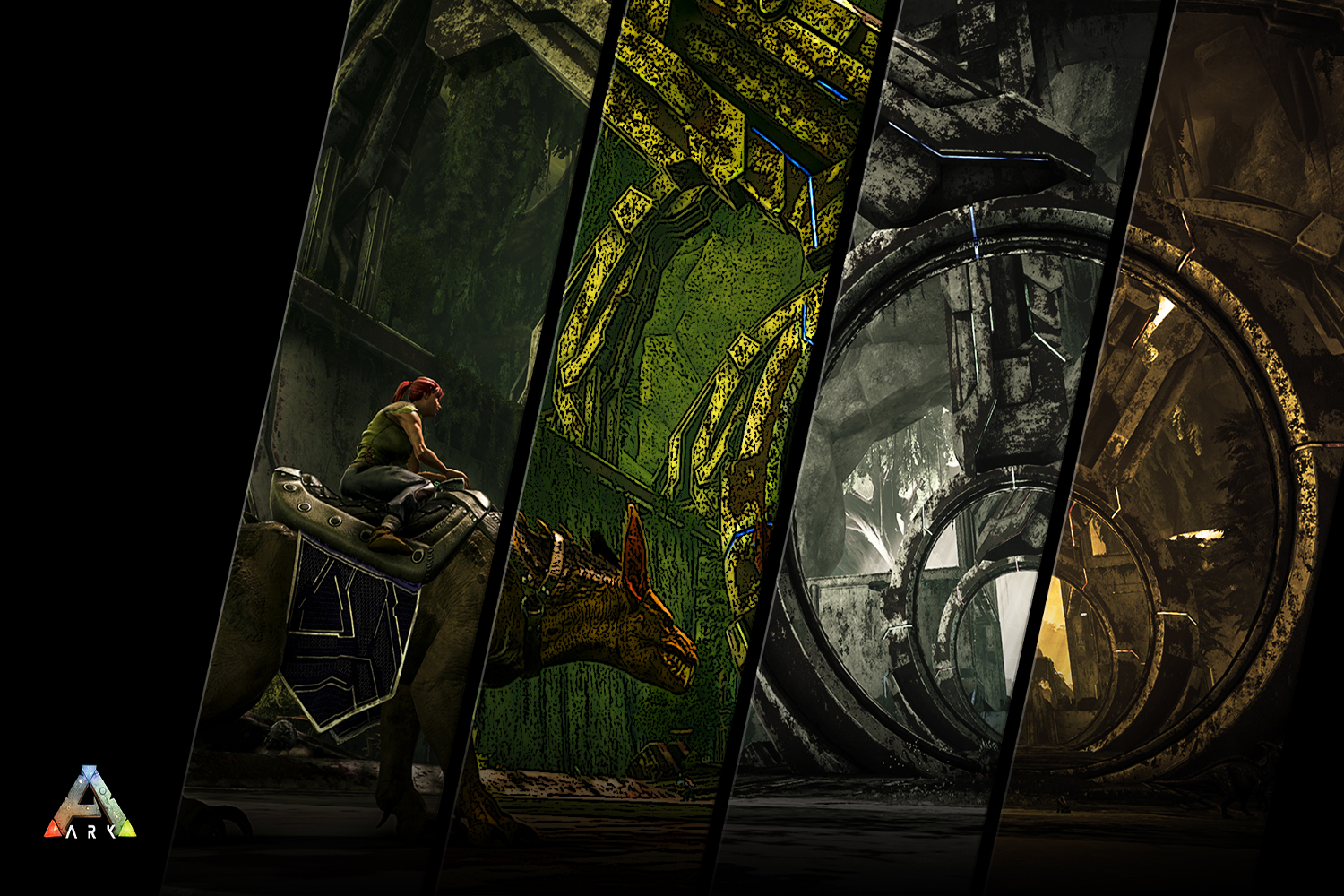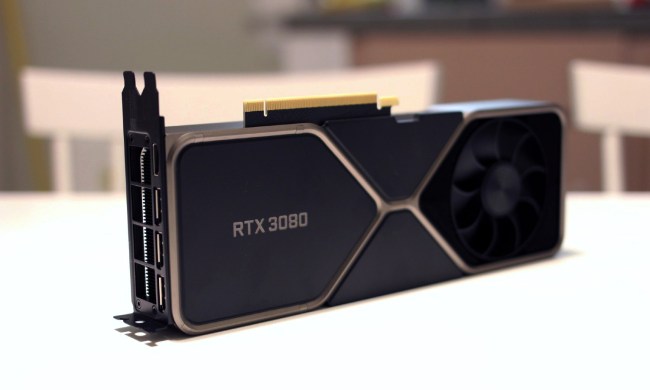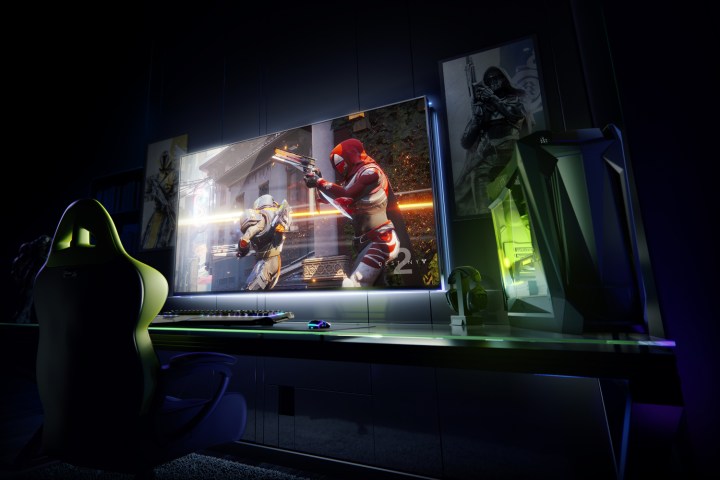
Also on Nvdia’s CES 2018 menu is an update to its GeForce Now game-streaming subscription service, and a few updates to its GeForce Experience desktop client. The streaming aspect will be good news for Windows 10 and MacOS gamers alike, while players looking for more flair in their games may find the announcements regarding GeForce Experience and Nvidia’s upcoming drivers a refreshing change from the norm. Throw it all together, and Nvidia has a rather tasty buffet of gaming news at this year’s technology show.
Big displays with built-in Nvidia Shield
The meat of Nvidia’s CES 2018 blowout is a new family of displays sporting massive 65-inch screens, Ultra HD HDR resolutions at 120Hz, and G-Sync support. If that’s not enough to whet your whistle, these BFGDs (Big Format Gaming Displays) are based on Nvidia’s Android TV-powered Shield platform. That means you have integrated access to the GeForce Now streaming platform, Nvidia’s in-home GameStream service, and Android apps only served up on the Shield storefront.
“At the heart of BFGDs is the latest G-Sync HDR technology that synchronizes the display’s 120Hz refresh rate to that of the game at every moment in time,” Nvidia says. “This G-Sync Variable Refresh Rate technology delivers a highly responsive, smooth, tear-free, immersive gaming experience unmatched by any display of this size.”
If you’re not familiar with G-Sync technology, it synchronizes the refresh rate of the display with the frames-per-second output of a GeForce graphics card or discrete chip. This process eliminates visual screen tearing when the graphics chip’s performance fluctuates while rendering on-screen action.
Software-based Vsync can help, but it’s known to cause stuttering and input lag. G-Sync is a native method embedded in Nvidia’s hardware.
Manufacturers to produce these monster Shield-based displays include Acer, Asus, and HP. All three will showcase their displays during the show, including the HP Omen X 65 that’s slated to arrive this fall for a yet-to-be-determined price. All models will have a bundled Shield remote and game controller for playing Android games and managing apps via the Android TV operating system.
Finally, all displays falling under the BFGD banner will have a peak brightness of 1,000 nits, support for the DCI-P3 color space, and fast response times. Google’s Assistant is also a major player in these displays, giving you full control of content by using just your voice. The G-Sync HDR component supports video playback at their native framerates, such as 24 and 25 FPS formats.
GeForce Now officially supports Uplay

GeForce Now first began as a subscription service for Shield-branded devices. For $8 per month, you can stream a select library of 56 games to most every PC with an internet connection. All the work is performed in Nvidia’s cloud, thus the Shield devices merely serve as receivers. The company also sells games through this service, such as the remastered BioShock trilogy and Batman: Arkham Knight, so you can stream and play at any time even if you don’t have a subscription.
Nvidia began testing the service on Windows 10 and MacOS last summer, but the beta came with an awesome twist: a virtual desktop with support for game libraries not originating from Nvidia’s cloud. The initial third-party support consisted of the Steam and Battle.net platforms, but now the service includes titles purchased on Ubisoft’s Uplay platform. Supported titles include Assassin’s Creed: Black Flag, Tom Clancy’s The Division, For Honor, and Tom Clancy’s Ghost Recon Wildlands.
Right now, not every PC game sold on these three third-party platforms will run on GeForce Now. Optimized games include recent hits like Resident Evil 7: Biohazard, Overwatch, Prey, PlayerUnknown’s Battlegrounds, and Rocket League. Other optimized favorites include Diablo III, Half-Life 2, Rise of the Tomb Raider, Middle-earth: Shadow of Mordor, and The Witcher 3: Wild Hunt. There are loads more supported games that are not yet optimized for the best streaming experience.
For $8 per month, you can stream a select library of 56 games to most every internet-connected PC.
“GeForce Now gets you playing faster than ever, as the system maintenance tasks are handled for you,” says Nvidia’s Phil Eisler. “Patches and driver updates are installed automatically, and cloud saves are enabled for cross-platform play. GeForce NOW receives regular updates, including service enhancements, new games, and additional data centers, the tenth most recently opening in Amsterdam.”
Download the new GeForce Now client for Windows 10 and MacOS here. Right now, it’s available as a free beta, but expect a subscription service to emerge sometime before the end of 2018.
GeForce Experience update
In addition to the display and GeForce Now news, Nvidia also revealed features heading to the GeForce Experience desktop client. For starters, Nvidia introduced a new feature called Freestyle on the driver level that adds post-processing filters to more than 100 games.
You can set these filters to automatically load when launching a game, or simply access the GeForce in-game overlay to apply or change a filter. There are currently 15 in all with 38 different settings. Here they are:
| Black and White | Contrast | Half Tone | Retro | Depth of Field |
| Color | Details | Mood | Sepia | Special FX |
| Colorblind | Exposure | Night Mode | Vignette | Adjustments |
“Freestyle’s more serious uses include a colorblind mode that makes it easier for colorblind gamers to differentiate between colors,” the company said. “Gamers can even use night mode, which reduces blue color, so users can sleep better after a night of gaming.”
Continuing with the filter-based focus, Nvidia revealed that Ansel received eight new filters, along with the ability to stack filters for taking the ultimate in-game photograph. If you’re not familiar with this feature, it freezes the game state without actually pausing the game so you can run around with a virtual camera and take photos like a tourist in the Big Apple. You can adjust the camera to any position, apply filters, switch on HDR depth, and create 360-degree images.
According to Nvidia, this feature also received a huge user interface “makeover,” but details are sparse. You’ll have to see for yourself when Freestyle and the Ansel update arrive as a beta in the GeForce Experience client on January 9 (v3.12). You’ll need to enable “Experimental Features” within the GeForce Now client to see the updated components.
Finally, Fortnite Battle Royal, Crossout, and Elex will soon include support for ShadowPlay Highlights. This is a tool for capturing your greatest gaming moments in video and screenshots for sharing using the GeForce Experience client. Although you can capture any moment during your gaming sessions, a highlight is triggered on the game side, telling the ShadowPlay platform to automatically record and save an epic boss battle or an inhuman kill streak.

